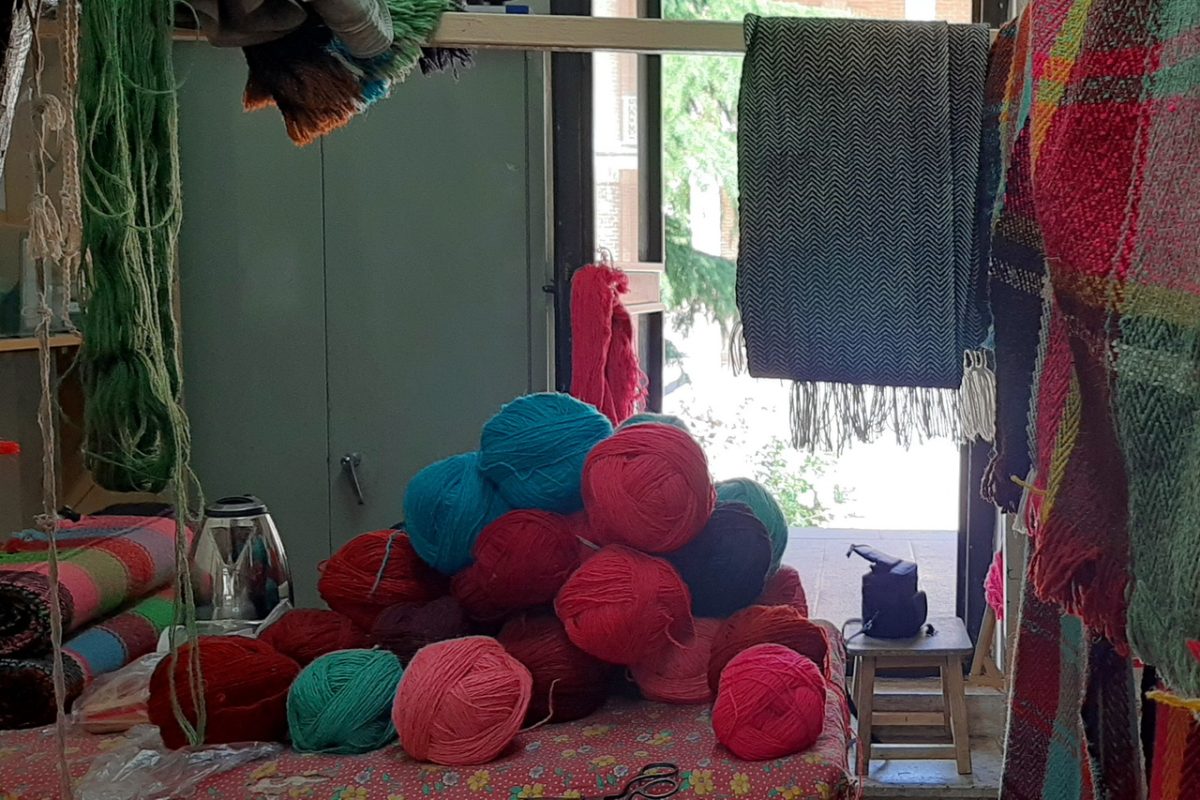Mowj weaving, also called Sachim weaving, Mashte weaving, Jila weaving is similar to Chadorshab, a piece of cloth traditionally used to organize mattresses, blankets and pillows at homes, in terms of appearance and pattern, but it is more complex in terms of design and composition.
Mowj weaving is applied in blankets, Iranian Korsi, blankets, mattresses, and sometimes for nomadic tents. In fact, this art has different applications in harmony with weather conditions and different seasons of the year.
Mowj means ‘wave’ in Persian, and the naming of this art stems from the linked zigzag designs woven on the colored stripes along the threads.
Mowj is usually woven in the form of small and large squares of navy blue, orange and dark red colors among the Kurdish tribes. Of course, other colors such as orange, green, creamy, black, blue and light and dark red are also common.
Peacock feather, checkered forms, black and white, red, ponds, flower, partridge head, sparrow, grapes, butterfly, goat, bird, tree, etc. are among the decorative designs used in this art.
Zahra Safaei, an Iranian handicrafts expert, said the age-old art, with a history of 400 years, has been popular in the provinces of Kordestan, Lorestan, Kermanshah, Ilam, Chaharmahal and Bakhtiari, Qazvin and the country’s southern provinces, but unfortunately, it has faded in recent years.
In 2011, Mowj weaving was registered as a spiritual heritage under the name of Qazvin Province, and in 2013, handicraft experts standardized it and got a national standard number for it.
Reviving the art
Ahmed Bamshad is the only expert active in this field in the country and one of the pioneers of this art in Qazvin city. Born in 1937, he learned this art as a family heritage from his father and spent more than 70 years of his life in practicing Mowj weaving.
He is currently offering the art to those interested at Saraye Sa’d-o-Saltaneh and helping to revitalize it.
Different Iranian handicrafts based on weaving and fabric
Woven rugs, Zilu, Gebeh, Jajim, Fabric and Palass, fabrics woven with golden threads, embossed velvets, Abaa, night veils, silk fabrics, and Termeh are among other similar handicrafts in Iran.
Related Articles:
